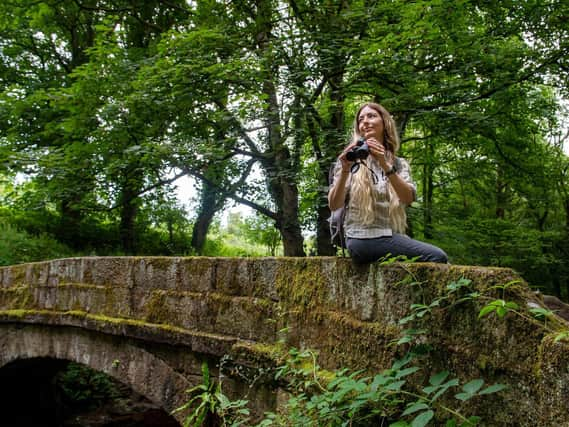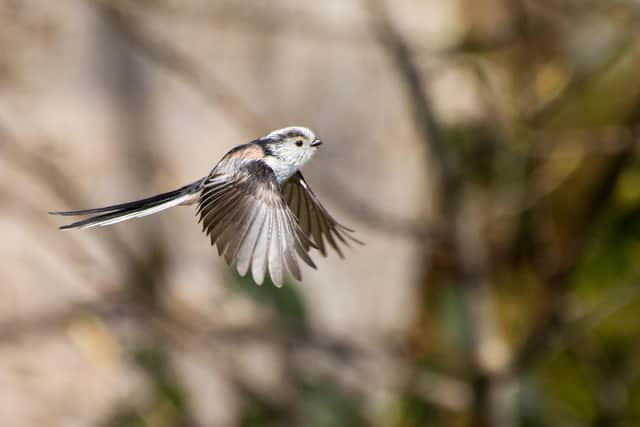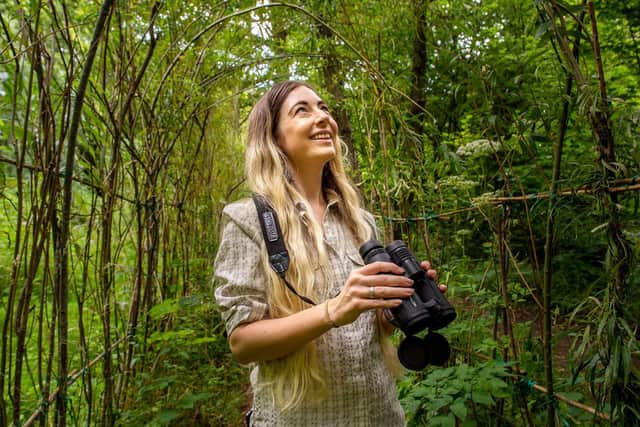How maths is unlocking nature's secrets in Sheffield's Rivelin Valley


Natasha Ellison has led a team of researchers at the University of Sheffield in using maths to try to understand why flocks of long-tailed tits segregate themselves into different parts of the landscape.
Segregation isn’t unusual in the animal kingdom - but it is usually only exhibited in territorial animals, like wolves, who aggressively defend and stay close to their dens.
Advertisement
Hide AdAdvertisement
Hide AdIt was unknown why the birds, who do not exhibit territorial behaviour, would separate into different parts of the same area.


Miss Ellison and her team tracked the birds around Sheffield’s picturesque Rivelin Valley, which eventually produced a pattern across the landscape, and using maths revealed the behaviours causing these patterns.
The equations used to understand the birds are similar to those developed by mathematician and Bletchley Park codebreaker Alan Turing to describe how animals get their spotted and striped patterns. Turing’s famous mathematics indicates patterns will appear as an animal grows in the womb, here it is used to find out which behaviours lead to the patterns across the landscape.
Miss Ellison, who previously taught maths at Silverdale School in Sheffield, said maths was the “only option” when it came to deciphering why the birds were segregating.
Advertisement
Hide AdAdvertisement
Hide AdShe said: “Mathematical models help us understand nature in an extraordinary amount of ways and our study is a fantastic example of this.”


The study found that flocks of long-tailed tits are less likely to avoid places where they have interacted with relatives and more likely to avoid larger flocks, whilst preferring the centre of woodland. Crucial to the study were field worker Sarah Biddiscombe and former PhD student Clare Napper, who followed the birds around Rivelin. The team also includes mathematician
Dr Jonathan Potts and ornithologist Prof Ben Hatchwell, who has studied the population for over 25 years.
Miss Ellison, 32, said: “Long-tailed tits are too small to be fitted with GPS trackers like larger animals, so researchers follow these tiny birds on foot, listening for bird calls and identifying birds with binoculars. The field work is extremely time consuming and without the help of these mathematical models these behaviours wouldn’t have been discovered.”
Advertisement
Hide AdAdvertisement
Hide AdIt is the first time mathematical modelling has been used to understand the behaviour of non-territorial animals, and in long-tailed tits.
Four years in to her PhD studies, Miss Ellison is now hoping that she can forge a career promoting the idea of using maths to solve nature’s big questions.
“As a maths teacher, I never knew you could apply maths to biology in this way - and I’m sure my students won’t have thought so either,” she said. “At school, you think of maths as just adding numbers together or looking at shapes but people are starting to realise that maths has so many other applications in nature.”
Miss Ellison is now hoping to apply the mathematical models to other animals, as well as inspiring young maths students.
Advertisement
Hide AdAdvertisement
Hide AdShe is already developing a programme with schools across the country that will see primary school children use degree-level maths to design algorithms, like those developed by Alan Turing, to predict patterns. She is also hoping that the popularity of Turing, who will appear on the new £50 note due out next year and was the subject of the 2014 film the Imitation Game, could further inspire children to consider maths as a career.
Comment Guidelines
National World encourages reader discussion on our stories. User feedback, insights and back-and-forth exchanges add a rich layer of context to reporting. Please review our Community Guidelines before commenting.